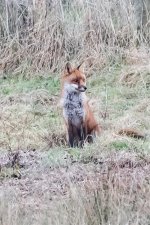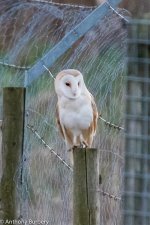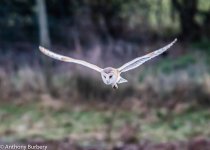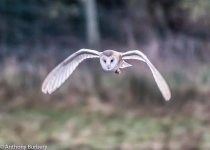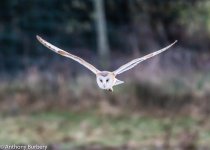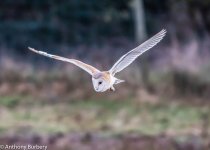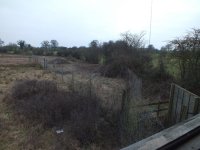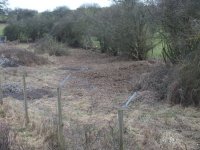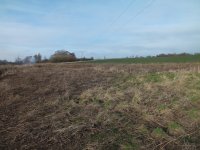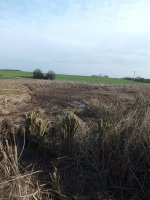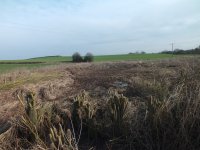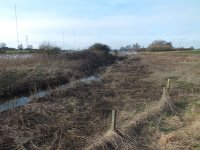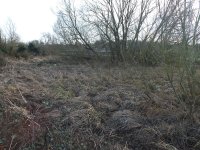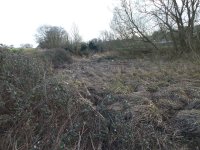-
Welcome to BirdForum, the internet's largest birding community with thousands of members from all over the world. The forums are dedicated to wild birds, birding, binoculars and equipment and all that goes with it.
Please register for an account to take part in the discussions in the forum, post your pictures in the gallery and more.
You are using an out of date browser. It may not display this or other websites correctly.
You should upgrade or use an alternative browser.
You should upgrade or use an alternative browser.
Upton Warren (55 Viewers)
- Thread starter andythomas
- Start date
More options
Who Replied?Not only the fox but the Barn Owl too!!
This is the fox inside the fox-fence. Fortunately it showed its escape route so hopefully we can fix it at the work party tomorrow.[/QUOTE
A very eventful end to an hour at The Flashes tonight. The fox and the Barn Owl showing nicely.
Attachments
upstarts1979
Well-known member
This is the fox inside the fox-fence. Fortunately it showed its escape route so hopefully we can fix it at the work party tomorrow.[/QUOTE
A very eventful end to an hour at The Flashes tonight. The fox and the Barn Owl showing nicely.
Great shots Tony didn't look on here last night 👍🍻
upstarts1979
Well-known member
Flashes Work Party today
The conditions were better than we expected and we managed to complete all the scheduled tasks eben with a relatively depleted crew.:t:
The 18 of us completed the following.
The drainage ditch in front of the hide was dug out , hopefully it will attract another Jack snipe.
The West hedgerow had a section of very old Hawthorns laid successfully. At this age they usually break off but our hedge layer Stuart did a cracking job. In the gap of hedge we planted Hawthorn saplings. This gap was were shingle had been stored for many years.
Our Maintenance team repaired 8 holes in the fox fence
It would appear that a FOX is breaking through by gnawing at the mesh half way up the fence and then jumping through. Over the coming weeks could everyone keep an eye open for fox incursions and rdport on here or text me.
The brash from last week's hedge pruning along the path from the cuckoo hide was cut up and piled into the bramble to help rejuvenate it.
Finally most of us gathered in the Hen Brook Triangle ( an area very few people have ever seen. It is situated on the North side of the 1st Flash. It consists mainly of sedge and as it is next to the brook it periodically floods. It lies in a hollow and used to be good for snipe teal and owls . However over the years it has overgrown and no open water now exists).
We have never worked on the wet areas but today we strimmed a section and raked it out. Immediately open water re-emerged and even just walking on it created boggy areas. The surrounding willows were removed and this will reduce the sponge effect. Although you can't view the area from the hides birds should now start to drop into it. The removal of the willows will also keep the Flashes more 'open.
Many Thanks to Andy A. Alan D. Bob O. Bobby P. Charles and his Granddaughter. Ian Jos. Jim B. John newbie. Julie W. Keith M. Kim W. Nick F. Paul M. Ray C. Stuart. Tony B and me.
Also thanks to Tony for the Marmalade cake :eat:
Pics 1 and 2
The West hedge line, hopefully the bramble will not be left to overgrow to the extent it had done. The far end shows a small section of laid hedgerow and closer to the hide hawthorn planting. A few areas of bramble have been left to provide food and nesting sites.
Pic 3
The view of the Hen Brook Triangle (HBT) as seen from the avocet hide.
pic 4
The view inside the HBT, showing the pollarded willows and strimmed/raked area. We only managed to cut 20% of the wet area, as the going was tough especially raking up the wet cuttings. The cuttings were piled up on the border fence where hopefully habitat for rodents will be created and ultimately providing owl fodder:t:
B John
John
The conditions were better than we expected and we managed to complete all the scheduled tasks eben with a relatively depleted crew.:t:
The 18 of us completed the following.
The drainage ditch in front of the hide was dug out , hopefully it will attract another Jack snipe.
The West hedgerow had a section of very old Hawthorns laid successfully. At this age they usually break off but our hedge layer Stuart did a cracking job. In the gap of hedge we planted Hawthorn saplings. This gap was were shingle had been stored for many years.
Our Maintenance team repaired 8 holes in the fox fence
It would appear that a FOX is breaking through by gnawing at the mesh half way up the fence and then jumping through. Over the coming weeks could everyone keep an eye open for fox incursions and rdport on here or text me.
The brash from last week's hedge pruning along the path from the cuckoo hide was cut up and piled into the bramble to help rejuvenate it.
Finally most of us gathered in the Hen Brook Triangle ( an area very few people have ever seen. It is situated on the North side of the 1st Flash. It consists mainly of sedge and as it is next to the brook it periodically floods. It lies in a hollow and used to be good for snipe teal and owls . However over the years it has overgrown and no open water now exists).
We have never worked on the wet areas but today we strimmed a section and raked it out. Immediately open water re-emerged and even just walking on it created boggy areas. The surrounding willows were removed and this will reduce the sponge effect. Although you can't view the area from the hides birds should now start to drop into it. The removal of the willows will also keep the Flashes more 'open.
Many Thanks to Andy A. Alan D. Bob O. Bobby P. Charles and his Granddaughter. Ian Jos. Jim B. John newbie. Julie W. Keith M. Kim W. Nick F. Paul M. Ray C. Stuart. Tony B and me.
Also thanks to Tony for the Marmalade cake :eat:
Pics 1 and 2
The West hedge line, hopefully the bramble will not be left to overgrow to the extent it had done. The far end shows a small section of laid hedgerow and closer to the hide hawthorn planting. A few areas of bramble have been left to provide food and nesting sites.
Pic 3
The view of the Hen Brook Triangle (HBT) as seen from the avocet hide.
pic 4
The view inside the HBT, showing the pollarded willows and strimmed/raked area. We only managed to cut 20% of the wet area, as the going was tough especially raking up the wet cuttings. The cuttings were piled up on the border fence where hopefully habitat for rodents will be created and ultimately providing owl fodder:t:
B
Attachments
Last edited:
Phil Andrews
It's only Rock and Roller but I like it

Our Maintenance team repaired 8 holes in the fox fence
It would appear that a FOX is breaking through by gnawing at the mesh half way up the fence and then jumping through. Over the coming weeks could everyone keep an eye open for fox incursions and rdport on here or text me.
Can you remember what gauge the wire was John? Makes you wonder if it wasn't up to the requirement (think 12 gauge is usually specified for fox proof fencing).
upstarts1979
Well-known member
Can you remember what gauge the wire was John? Makes you wonder if it wasn't up to the requirement (think 12 gauge is usually specified for fox proof fencing).
The lower 3 feet is 1 inch mesh. The upper section is 2 inch mesh and thinner. The mesh is attached to 6 foot high stock fencing. I Wonder if the longhorn cattle could be ripping it with their horn's. ?
Phil Andrews
It's only Rock and Roller but I like it

It wasnt so much the size of the mesh that was concerning me, more the thickness of the wire (I suspect the cattle's horns are a more likely culprit). 12 gauge wire is 0.0808 inches in diameter (2.05mm); I struggle to believe the majority of the fence wire at the Flashes is that thick.
Last edited:
Two of us spent all morning yesterday repairing the fox fence and we a sure the holes are not caused by the cattle's horns. Every hole was just above the lower thicker 1" mesh, cattle holes would be more random. They were a perfect height for a fox standing on its back legs.It wasnt so much the size of the mesh that was concerning me, more the thickness of the wire (I suspect the cattle's horns are a more likely culprit). 12 gauge wire is 0.0808 inches in diameter (2.05mm); I struggle to believe the majority of the fence wire at the Flashes is that thick.
The basic problem is the wire is too thin, its just chicken wire and I estimate the dia to be around 0.75mm (0.03") and maybe even less.
A further problem is the thicker wire, which is buried, has started to rot through at ground level. Basically the fence is no longer fit for purpose!:t:
upstarts1979
Well-known member
It wasnt so much the size of the mesh that was concerning me, more the thickness of the wire (I suspect the cattle's horns are a more likely culprit). 12 gauge wire is 0.0808 inches in diameter (2.05mm); I struggle to believe the majority of the fence wire at the Flashes is that thick.
Bob O would know more than me on the gauge. I will speak to Andy H at the Trust if this continues. With 6 weeks before breeding season starts will have to monitor a bit more closely.
Phil Andrews
It's only Rock and Roller but I like it

Des reports this morning:
Moors Pool 80% frozen, North Moors 90% frozen.
Whooper Swan, Curlew 10, Shelduck 5, Pochard 22, Shoveler 20.
Moors Pool 80% frozen, North Moors 90% frozen.
Whooper Swan, Curlew 10, Shelduck 5, Pochard 22, Shoveler 20.
upstarts1979
Well-known member
Two of us spent all morning yesterday repairing the fox fence and we a sure the holes are not caused by the cattle's horns. Every hole was just above the lower thicker 1" mesh, cattle holes would be more random. They were a perfect height for a fox standing on its back legs.
The basic problem is the wire is too thin, its just chicken wire and I estimate the dia to be around 0.75mm (0.03") and maybe even less.
A further problem is the thicker wire, which is buried, has started to rot through at ground level. Basically the fence is no longer fit for purpose!:t:
I will contact Andy urgently and tell him the problem. I watched the cattle scratching their heads on the fence but probably higher than where the holes were. It could be after 16 years the fencing needs a major overhaul. Yes Bob and Tony secured all the wooden overhangs and checked the whole length so fingers crossed for this year.
I watched 2 foxes outside the fence yesterday evening. Bob can you estimate the length of wire we need (via google earth - you know how to do it better than me)B
upstarts1979
Well-known member
Birding yesterday
The cold conditions was probably the main reason for a very eerily quiet morning session at the Moors but even the Flashes was almost devoid of passerines.
MOORS
Whooper swan , mute swan 4, cormorant 5, shoveler 16, gadwall 3, teal 12, shelduck 3, pochard 24, tufted 20, coot only 35, oystercatcher, curlew 10, greenfinch, chaffinch
NORTH MOORS
Mute swan 2, shelduck, bullfinch , goldcrest
SAILING POOL
GCG 7, Tufted 24, Coot 45 - 50 , kingfisher,
FLASHES
Mute swan 2, Greylag c20, Teal 45, shelduck, coot 2, Oystercatcher from Moors, snipe 12, lapwing 730, BHG 200, Buzzard 3, sparrowhawk, stock dove 15,Raven, Green woodp, cetti's, goldcrest, reed bunting
The cold conditions was probably the main reason for a very eerily quiet morning session at the Moors but even the Flashes was almost devoid of passerines.
MOORS
Whooper swan , mute swan 4, cormorant 5, shoveler 16, gadwall 3, teal 12, shelduck 3, pochard 24, tufted 20, coot only 35, oystercatcher, curlew 10, greenfinch, chaffinch
NORTH MOORS
Mute swan 2, shelduck, bullfinch , goldcrest
SAILING POOL
GCG 7, Tufted 24, Coot 45 - 50 , kingfisher,
FLASHES
Mute swan 2, Greylag c20, Teal 45, shelduck, coot 2, Oystercatcher from Moors, snipe 12, lapwing 730, BHG 200, Buzzard 3, sparrowhawk, stock dove 15,Raven, Green woodp, cetti's, goldcrest, reed bunting
upstarts1979
Well-known member
The Mystery of where the Teal go in winter
During freeze ups at the Flashes the lagoons are 'birdless'. But the constant whistling of teal can be heard. We often see them drop down by the sewage works. So after yesterday's work party we decided to have a look where they actually go. Thinking it was the Hen Brook we were pleasantly surprised to find a marshy habitat with open water within it. It appears that the Hen Brook flows
through it and thus keeps it open during freeze overs.
I am not sure who owns the land and it could be Trust land as the posts in the Hen Brook Triangle continue along the Hen Brook to this swampy area.
Either way it is a good habitat and worth enhancing.
We have a smaller version of this on our reserve to the right of the sewage works behind the fox fencing. This was once an open body of water but it overgrew with rank marsh vegetation and there is no longer anywhere for kingfisher to feed where they once did.
My worry is that this newly discovered area could soon go the same way if not managed.
I will contact the WWTrust to find out.
pics
1. The now partially opened up Hen Brook Triangle (HBT), this area was excellent for wintering snipe and teal, our aim is to try and recreate that habitat but we will require mechanical means.
2. The Hen Brook next to the HBT.
This part of the brook was dug out several years ago and was 3 times its present width. Over time it has silted and become less attractive to wintering duck. This is also the main reason why the HBT has become drier.
3 and 4 show the mystery teal marsh.
There are still a couple of small open water areas but these could be choked if no action is taken. Although we won't have access to the site, it would keep teal on the reserve in hard winters.
During freeze ups at the Flashes the lagoons are 'birdless'. But the constant whistling of teal can be heard. We often see them drop down by the sewage works. So after yesterday's work party we decided to have a look where they actually go. Thinking it was the Hen Brook we were pleasantly surprised to find a marshy habitat with open water within it. It appears that the Hen Brook flows
through it and thus keeps it open during freeze overs.
I am not sure who owns the land and it could be Trust land as the posts in the Hen Brook Triangle continue along the Hen Brook to this swampy area.
Either way it is a good habitat and worth enhancing.
We have a smaller version of this on our reserve to the right of the sewage works behind the fox fencing. This was once an open body of water but it overgrew with rank marsh vegetation and there is no longer anywhere for kingfisher to feed where they once did.
My worry is that this newly discovered area could soon go the same way if not managed.
I will contact the WWTrust to find out.
pics
1. The now partially opened up Hen Brook Triangle (HBT), this area was excellent for wintering snipe and teal, our aim is to try and recreate that habitat but we will require mechanical means.
2. The Hen Brook next to the HBT.
This part of the brook was dug out several years ago and was 3 times its present width. Over time it has silted and become less attractive to wintering duck. This is also the main reason why the HBT has become drier.
3 and 4 show the mystery teal marsh.
There are still a couple of small open water areas but these could be choked if no action is taken. Although we won't have access to the site, it would keep teal on the reserve in hard winters.
Attachments
Last edited:
Phil Andrews
It's only Rock and Roller but I like it

Male Goosander dropped into the Moors Pool as per Richard Baker
Phil Andrews
It's only Rock and Roller but I like it

Male Goosander dropped into the Moors Pool as per Richard Baker
New for the year - #84 - Goosander
UW82
Well-known member
Today's highlights:
MOORS and SAILING POOL* only, N MOORS 90% frozen. The FLASHES apparently 100% frozen.
MOORS: 80% frozen for a few hours but unfreezing during the day.
Whooper Swan. Circled the pool a few times with Mute Swans but unlike them did not leave.
Goosander (m) Flew in at approximately 10.40 and, surprise, surprise, flew north at 11.10.
Pochard (22)-------------------Shoveler (23)
Teal (11)-----------------------Gadwall (11)
Tufted Duck (13) (29)*-------Shelduck (5)
Curlew (11)--------------------Snipe (4)
Lapwing (97)------------------Little Grebe (2)
Cormorant (24)---------------Little Egret
Herring Gull-------------------L B B Gull (3)
B H Gull (c150)---------------Redwing (1)
Pheasant----------------------Water Rail
Cetti's Warbler (1)------------Greylag Goose (5)*
G C Grebe (7)*---------------Kestrel
Mute Swan (2)
Des.
MOORS and SAILING POOL* only, N MOORS 90% frozen. The FLASHES apparently 100% frozen.
MOORS: 80% frozen for a few hours but unfreezing during the day.
Whooper Swan. Circled the pool a few times with Mute Swans but unlike them did not leave.
Goosander (m) Flew in at approximately 10.40 and, surprise, surprise, flew north at 11.10.
Pochard (22)-------------------Shoveler (23)
Teal (11)-----------------------Gadwall (11)
Tufted Duck (13) (29)*-------Shelduck (5)
Curlew (11)--------------------Snipe (4)
Lapwing (97)------------------Little Grebe (2)
Cormorant (24)---------------Little Egret
Herring Gull-------------------L B B Gull (3)
B H Gull (c150)---------------Redwing (1)
Pheasant----------------------Water Rail
Cetti's Warbler (1)------------Greylag Goose (5)*
G C Grebe (7)*---------------Kestrel
Mute Swan (2)
Des.
Phil Andrews
It's only Rock and Roller but I like it

Whooper Swan at the Moors Pool this morning as per Bob Oakley and an increase to 4 Oystercatcher.
Phil Andrews
It's only Rock and Roller but I like it

From the Flashes Andy P reports:
Lapwing c680, Curlew 10, Snipe, Oystercatcher (a fifth bird?), Teal 12, Shelduck, Shoveler, BH Gull 110.
Lapwing c680, Curlew 10, Snipe, Oystercatcher (a fifth bird?), Teal 12, Shelduck, Shoveler, BH Gull 110.
Phil Andrews
It's only Rock and Roller but I like it

Sue Hyde reports 5 Shelduck and an Oystercatcher at the Moors Pool this morning.
Similar threads
- Replies
- 1
- Views
- 1K




